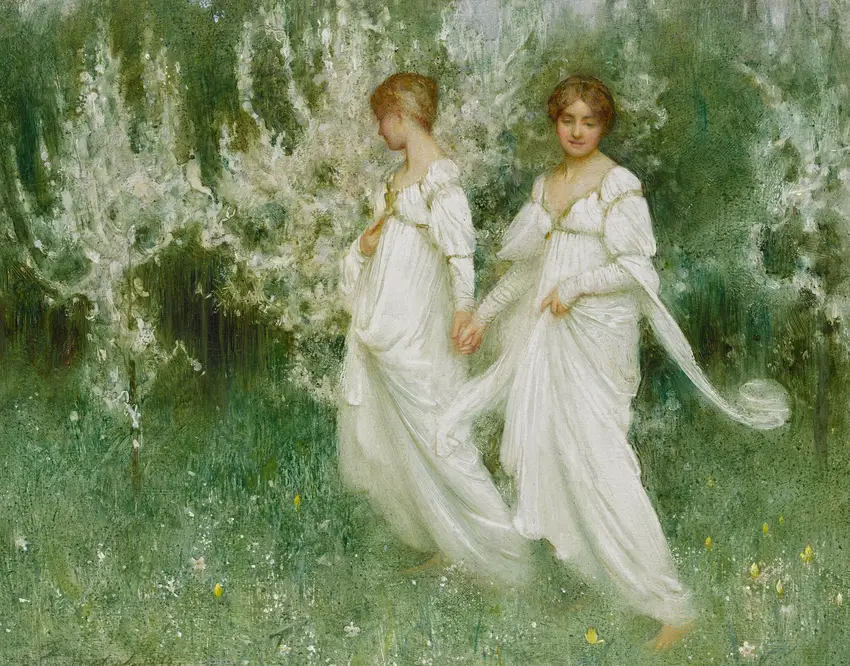Claude Monet’s *Wisteria* (circa 1925) is a mesmerizing explosion of color and movement, capturing the delicate beauty of cascading purple blooms with an almost dreamlike quality. The painting immerses the viewer in a lush, tangled world where petals seem to dance in the breeze, their hues shifting from deep violet to soft lavender under dappled sunlight. Monet’s loose, expressive brushstrokes blur the line between reality and abstraction, inviting the eye to wander through layers of texture and light. This work, created late in his career, reflects his lifelong obsession with nature’s fleeting moments—here, the wisteria’s ephemeral splendor feels both fleeting and eternal.
What makes *Wisteria* particularly fascinating is how Monet transforms a garden scene into something almost musical, with strokes that hum like notes on a page. The composition lacks a clear focal point, yet the chaos feels intentional, as if the artist wanted to replicate the way memory distills sensory overload into fragments of beauty. Shadows and highlights play hide-and-seek among the blossoms, suggesting depth without rigid structure. It’s a testament to Monet’s mastery that something so wild and untamed can feel so meticulously alive.


-full.webp)
-full.webp)
-full.webp)
-full.webp)
-full.webp)

-full.webp)
-full.webp)